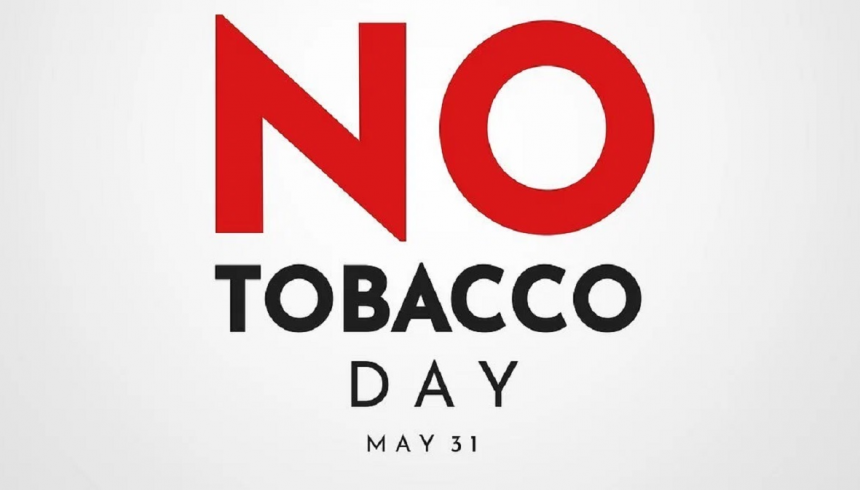WORLD NO TOBACCO DAY
As the world observes World No Tobacco Day today, public health experts are sounding the alarm about sophisticated manipulation tactics employed by tobacco and nicotine product manufacturers. This year’s theme, “Unmasking the Appeal: Exposing Industry Tactics on Tobacco and Nicotine Products,” shines a spotlight on how these companies deliberately target young people, women, and marginalized communities with carefully crafted marketing strategies designed to create lifelong addiction.
The tobacco industry has spent decades perfecting the art of deception, investing billions in research not to make their products safer, but to make them more appealing and addictive. In India, the stakes are high. With over 1.3 million tobacco-related deaths annually, the economic and human costs are staggering. While cigarette smoking is declining in some urban populations, smokeless tobacco, hookah, and vaping are on the rise, especially among youth. The industry’s grip is shifting — not loosening.
From candy-flavored e-cigarettes to sleek, smartphone-like vaping devices, manufacturers have transformed deadly products into seemingly attractive lifestyle accessories.
Perhaps most disturbing is the industry’s systematic targeting of children and adolescents. Brightly colored packaging, social media influencer partnerships, and flavors like bubblegum and cotton candy are not coincidental design choices – they represent a deliberate strategy to appeal to young palates and sensibilities. Research shows that 90% of adult smokers began before age 18, making youth recruitment essential for maintaining tobacco company profits.
Women represent another key target demographic, with marketing campaigns portraying smoking as a symbol of independence, weight control, and sophistication. The industry has successfully rebranded cigarettes as tools of female empowerment, despite the devastating health consequences including increased risks of cervical cancer, pregnancy complications, and osteoporosis.
Low-income communities and developing nations face particularly aggressive marketing tactics. Companies exploit economic vulnerabilities by selling single cigarettes, sponsoring local events, and positioning tobacco use as affordable luxury. These communities often lack access to cessation resources, creating a vicious cycle of addiction and poverty.
The New Face of Nicotine
The emergence of e-cigarettes and heated tobacco products represents the industry’s latest evolution in deceptive marketing. Companies promote these products as “safer alternatives” or “harm reduction tools,” despite limited long-term safety data and evidence of their role as gateway products to traditional smoking. The sleek design and high-tech appeal of vaping devices have successfully attracted millions of non-smokers, particularly young people, to nicotine addiction.
Social media platforms have become the new frontier for tobacco marketing, with companies using sophisticated algorithms to target vulnerable users with pro-tobacco content. Influencer partnerships, viral challenges, and user-generated content create an ecosystem where tobacco use appears normalized and desirable, circumventing traditional advertising restrictions.
India’s Regulatory Response
India has implemented significant tobacco control measures through the Cigarettes and Other Tobacco Products Act (COTPA) 2003, which prohibits smoking in public places, bans tobacco advertising, mandates pictorial health warnings, and restricts tobacco sales to minors. The act represents one of the world’s most comprehensive tobacco control frameworks, though enforcement challenges remain.
The government’s Nasha Mukt Bharat Abhiyan (Addiction-Free India Campaign) takes a broader approach to substance abuse prevention, including tobacco cessation programs, awareness campaigns, and community-based interventions. This initiative recognizes tobacco as part of India’s larger addiction crisis and emphasizes the need for coordinated action across multiple sectors to create addiction-free communities.
The Path Forward
As we observe World No Tobacco Day, the message is clear: the tobacco industry’s sophisticated manipulation tactics require equally sophisticated public health responses. This means stronger regulations, better enforcement, comprehensive education programs, and unwavering commitment to protecting vulnerable populations from predatory marketing practices.
The fight against tobacco is ultimately a fight for truth over deception, health over profit, and community well-being over corporate interests. By unmasking the industry’s appeal tactics, we empower individuals and communities to make informed decisions about their health and resist the allure of products designed to kill their users.
Every cigarette not smoked, every young person who chooses not to vape, and every community that stands up to tobacco marketing represents a victory in this ongoing battle for public health. The time to act is now – for our health, our families, and our future.
(Author is Assistant Professor, Community Medicine, GMC Baramulla)








